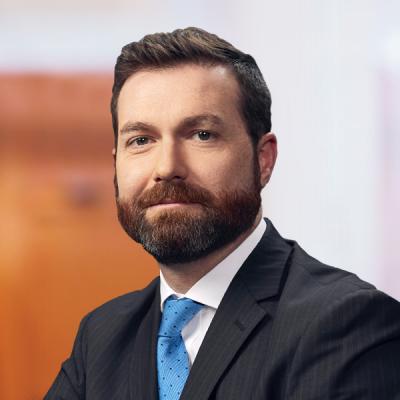What’s New in 5G - September 2021
The next-generation of wireless technologies – known as 5G – is here. Not only is it expected to offer network speeds that are up to 100 times faster than 4G LTE and reduce latency to nearly zero, it will allow networks to handle 100 times the number of connected devices, revolutionizing business and consumer connectivity and enabling the “Internet of Things.” Leading policymakers – federal regulators and legislators – are making it a top priority to ensure that the wireless industry has the tools it needs to maintain U.S. leadership in commercial 5G deployments. This blog provides monthly updates on FCC actions and Congressional efforts to win the race to 5G.
Regulatory Actions and Initiatives
Low-Band
- NTIA issues its annual report on the relocation of federal agencies from certain low-band spectrum.
- On August 16, 2021, NTIA released its 2020 annual report on federal agencies’ progress to relocate out of the 1710-1755 MHz (“AWS-1”) and 1695-1710 MHz and 1755-1780 MHz (“AWS-3”) bands. The FCC auctioned AWS-1 spectrum in 2006 and AWS-3 spectrum in 2013 for commercial wireless operations, and federal agencies have been transitioning out of the bands since that time. NTIA is required to submit annual reports to Congress on the transition process pursuant to the Commercial Spectrum Enhancement Act, which provides a centralized and streamlined funding mechanism – the Spectrum Relocation Fund – through which federal agencies can recover the costs associated with relocating their systems or sharing spectrum reallocated for non-federal uses.
Mid-Band
- The FCC grants additional licenses for 2.5 GHz band spectrum to Tribal entities in Alaska.
- On August 23, 2021, the FCC’s Wireless Telecommunications Bureau (“WTB”) announced that it granted an additional six licenses for spectrum in the 2.5 GHz band to Tribal entities in Alaska. It stated that “[t]he licenses granted today will afford these rural Alaska Native communities the opportunity to deploy 5G and other advanced wireless services that are a vital part of staying connected in this digital age” and that, to date, the agency has granted 270 licenses to Tribal entities.
- On August 23, 2021, the FCC’s Wireless Telecommunications Bureau (“WTB”) announced that it granted an additional six licenses for spectrum in the 2.5 GHz band to Tribal entities in Alaska. It stated that “[t]he licenses granted today will afford these rural Alaska Native communities the opportunity to deploy 5G and other advanced wireless services that are a vital part of staying connected in this digital age” and that, to date, the agency has granted 270 licenses to Tribal entities.
- The FCC takes action against participants in the 3.5 GHz band auction and allows Sony to rely on Key Bridge to protect federal incumbents remaining in the band.
- On August 11, 2021, the FCC’s Enforcement Bureau (“EB”) released two Orders related to the recently concluded 3.5 GHz band Citizens Broadband Radio Service (“CBRS”) auction (Auction 105) and the rule prohibiting certain communications during the auction.
- One Order adopts a Consent Decree between the EB and Nikola Engineering, Inc. d/b/a Nikola Broadband (“Nikola”). Nikola admitted to violating the prohibited communications rule by sending an email with the subject line “CBRS fiasco” to the Wireless Internet Service Providers Association (“WISPA”) members’ email group, stating “[w]e are backing out of the auction” and receiving a reply from a WISPA member that stated “[s]o even with a [Priority Access License (‘PAL’)] you would have been screwed basically.” To resolve the matter, Nikola agreed to implement a compliance plan and pay a $30,000 civil penalty.
- A second Order adopts a Consent Decree between the EB and Router12 Networks LLC (“Router12”). Router 12 admitted that it violated the prohibited communications rule by posting a statement on the WISP Talk Facebook Group page indicating that Router12 did not intend to place any bids in the auction and asking “[a]nyone else giving up on the CBRS PAL auction and focusing on [the Rural Digital Opportunity Fund auction] instead?” To resolve the matter, Router 12 agrees to implement a compliance plan and pay a $50,000 civil penalty.
- On August 6, 2021, the FCC’s WTB and Office of Engineering and Technology (“OET”) released a Public Notice approving a request by Sony – a Spectrum Access System (“SAS”) administrator for the 3.5 GHz band – to amend its SAS authorization by permitting it to use Key Bridge’s Environmental Sensing Capability (“ESC”) to protect federal incumbent operations in the band. WTB and OET found that Sony had effectively demonstrated that its SAS can properly interoperate with Key Bridge’s ESC and that it will comply with all relevant provisions of the FCC’s rules.
- On August 11, 2021, the FCC’s Enforcement Bureau (“EB”) released two Orders related to the recently concluded 3.5 GHz band Citizens Broadband Radio Service (“CBRS”) auction (Auction 105) and the rule prohibiting certain communications during the auction.
- The FCC completes its initial review of applications to participate in the 3.45 GHz band auction and takes additional steps to clear and coordinate remaining use of the band.
- On August 18, 2021, the FCC’s WTB and Office of Economics and Analytics (“OEA”) announced the status of the applications it received to participate in the auction of mid-band spectrum in the 3.45-3.55 GHz (“3.45 GHz”) band. Of the 42 applications it received, 26 applications, listed here, were found to be complete, and 16 applications, listed here, were found to be incomplete. Due to the effects of Hurricane Ida, applicants with incomplete applications will have an extended period of time – until September 7, 2021 – to correct any deficiencies and re-submit their filings, and all applicants will have until September 7, 2021 to submit their upfront payments. Bidding in the auction is scheduled to commence on October 5, 2021.
- On August 20, 2021, the WTB released a Public Notice seeking comment on the process for selecting a Reimbursement Clearinghouse to oversee the relocation and reimbursement process for radiolocation licensees transitioning from the 3.45 GHz band to the 2.9-3.0 GHz band. Among other things, the Public Notice seeks comment on the appropriate industry stakeholders (and the optimal number of stakeholders) to be included in the search committee for selecting the Clearinghouse. Comments and replies are due 15 days and 25 days, respectively, after Federal Register publication.
- In addition, the WTB and OEA released a Public Notice announcing the release of a Protective Order that, when signed by appropriate representatives of 3.45 GHz band auction applicants, allows them to view, subject to certain procedures to prevent unauthorized disclosure, sensitive information regarding the Department of Defense operations that will remain in the band. That information – referred to as “Controlled Unclassified Information” or “CUI” – includes unredacted transition plans and anticipated power level curves for high-power radar sites. Access to the information is limited to U.S. citizens who are employed by, or represent, an auction application and to their support personnel and may be obtained by submitting the Acknowledgement attached to the Protective Order.
- The FCC provides additional guidance and seeks public input on payments to incumbents for clearing mid-band spectrum in the 3.7 GHz band for commercial 5G services.
- On August 4, 2021, the FCC’s WTB released a Public Notice establishing the process by which space station operators relocating from the 3.7-4.2 GHz band (“C-band”) would certify that they qualify for accelerated relocation payments (“ARPs”) – totaling approximately $2.39 billion – to clear the spectrum by the Phase I deadline of December 5, 2021. It also establishes a process for parties that seek to challenge those certifications.
- Relatedly, the WTB released a Public Notice seeking comment on the implementation of the incremental reduction plan for satellite operators that do not meet the December 5, 2021, certification date for a Phase I ARP. Comments were due August 27, 2021.
- In addition, on August 18, 2021, the WTB issued a Public Notice opening a docket for disputes related to cost estimates, cost invoices, or payment or cost-sharing obligations, which will be addressed by the Relocation Payment Clearinghouse LLC (“RPC”). The RPC is responsible for collecting, reviewing, and distributing payments associated with the C-band relocation and began accepting claim submissions on August 16, 2021.
- The FCC takes additional steps on mid-band spectrum to support unlicensed operations like Wi-Fi and automotive safety applications.
- On August 6, 2021, the FCC’s WTB and Public Safety and Homeland Security Bureau (“PSHSB”) released two items related to the 5850-5925 MHz (“5.9 GHz”) band, which was recently reallocated by the FCC to allow for the expansion of unlicensed mid-band spectrum operations, while continuing to dedicate a portion of the band for intelligent transportation system (“ITS”) services using Connected Vehicle-to-Everything (“C-V2X”) technologies.
- First, the Bureaus released a Public Notice modifying the filing freeze previously imposed in the 5.9 GHz band on new, modified, or expanded roadside unit location registrations in the ITS service. The FCC previously imposed a filing freeze in December 2019 to stabilize the band in anticipation of reallocating the 5.9 GHz band.
- Second, the WTB and PSHSB released a Public Notice providing guidance on the procedures for parties requesting waivers for the early deployment of C-V2X-based technologies in the 5.9 GHz band.
- On August 6, 2021, the FCC’s WTB and Public Safety and Homeland Security Bureau (“PSHSB”) released two items related to the 5850-5925 MHz (“5.9 GHz”) band, which was recently reallocated by the FCC to allow for the expansion of unlicensed mid-band spectrum operations, while continuing to dedicate a portion of the band for intelligent transportation system (“ITS”) services using Connected Vehicle-to-Everything (“C-V2X”) technologies.
Other Spectrum Matters
- Spectrum Symposium to be held on September 21, 2021.
- NTIA announced that it will host an online symposium on September 21, 2021, focusing on national spectrum policy development and the evolution of new techniques and technologies for federal spectrum management, including spectrum sharing. The symposium will be webcast through NTIA’s website from 9:00 a.m. to 3:00 p.m. EDT and will include key leaders from the Biden Administration, Congress, federal agencies, and the private and non-public sectors. Additional information, including program and participant details and login information, will be posted on NTIA’s website as it becomes available.
5G Networks and Infrastructure
- The FCC creates innovation zones to support the testing of Open Radio Access Network (“Open RAN”) technologies.
- On August 6, 2021, the FCC released a Public Notice announcing the creation of two new innovation zones – one in and near North Carolina State University in Raleigh, NC, and the other in and near Northeastern University in Boston, MA – to, among other things, help promote platforms to test the integration of Open RAN. In addition, the Public Notice announced the expansion of the existing New York City Innovation Zone for program experimental licenses, the purpose of which will be to provide opportunities to test new advanced technologies and prototype networks – such as those that can support 5G technologies – outside of a traditional small campus or laboratory setting. According to a News Release issued by the Commission, the innovation zones “are actively engaged with the Open RAN development community and are expected to extend Open RAN technology development further.”
- On August 6, 2021, the FCC released a Public Notice announcing the creation of two new innovation zones – one in and near North Carolina State University in Raleigh, NC, and the other in and near Northeastern University in Boston, MA – to, among other things, help promote platforms to test the integration of Open RAN. In addition, the Public Notice announced the expansion of the existing New York City Innovation Zone for program experimental licenses, the purpose of which will be to provide opportunities to test new advanced technologies and prototype networks – such as those that can support 5G technologies – outside of a traditional small campus or laboratory setting. According to a News Release issued by the Commission, the innovation zones “are actively engaged with the Open RAN development community and are expected to extend Open RAN technology development further.”
- The FCC announces the effective date of its recently adopted rules for parties seeking reimbursement for removing and replacing equipment and services that pose a national security risk, adopts procedures for seeking reimbursement, and announces comment deadlines for new proposals.
- The FCC’s Third Report and Order adopting rules regarding reimbursement to providers for the removal and replacement of equipment and services that pose a national security risk in the rip-and-replace proceeding was published in the Federal Register on August 23, 2021. That means interested parties have until September 22, 2021, to file a petition for reconsideration of the FCC’s decision. The FCC’s rules will otherwise become effective on October 22, 2021 – a week before the reimbursement filing window (noted below) is expected to open.
- On August 3, 2021, the FCC’s Wireline Competition Bureau released a Public Notice adopting final procedures and providing additional guidance to eligible providers seeking reimbursement under the Secure and Trusted Communications Networks Reimbursement Program for removing, replacing, and disposing of covered equipment and services that pose a national security risk. The Public Notice also finalized, and included as Appendices, the Catalog of Eligible Expenses and Estimated Costs and List of Categories of Suggested Replacement Equipment and Services. As we previously reported, the FCC targets October 29, 2021, as the date for opening the window for submitting applications.
- In addition, the FCC’s Notice of Proposed Rulemaking (“NPRM”) and Notice of Inquiry (“NOI”) was published in the Federal Register on August 19, 2021, making comments and replies on both due September 20, 2021, and October 18, 2021, respectively. The NPRM proposes to prohibit the future authorization of any equipment on the FCC’s list of equipment and services that pose a national security risk, revoke existing authorizations for such equipment, and require auction applicants to certify that they will not rely on those entities for financial support. The NOI seeks comment on how the equipment authorization program can encourage manufacturers to consider cybersecurity.
- NTIA provides a summary of conclusions on its “listening sessions” related to 5G systems and infrastructure.
- On August 17, 2021, NTIA published its 5G Listening Sessions Summary of Conclusions Report. The summary was derived from two industry listening sessions – one on January 28, 2021, and another on February 25, 2021 – in which stakeholders were asked to identify incentives and policy options to ensure that the U.S. has adequate sources of secure, effective, and reliable 5G and future-generation wireless communications systems and infrastructure.
Mobile Broadband Coverage
- The FCC releases the first-of-its-kind 4G LTE coverage map.
- On August 6, 2021, the FCC released a brand new, first-of-its-kind, mobile broadband map, showing mobile 4G LTE voice and broadband coverage across the U.S. from the Nation’s largest wireless providers. The map, available here, includes data as of May 15, 2021, and will allow consumers to search by specific address to better understand whether they should be able to make and receive voice calls or use wireless data. According to a News Release issued by the FCC, Acting Commissioner Jessica Rosenworcel stated: “Today’s new map represents progress in our efforts to implement the Broadband DATA Act and build next-generation broadband maps that can help to connect 100 percent of Americans.”
- Relatedly, on August 25, 2021, the FCC’s Broadband Data Task Force and the Wireless Bureau released an Order granting a request by the California Public Utilities Commission to extend the time for parties to file comments and reply comments on the FCC’s proposed technical requirements to implement the mobile challenge, verification, and crowdsourcing processes applicable to the FCC’s collection of data on the status of mobile broadband availability throughout the U.S. Comments are now due September 10, 2021, and reply comments are due September 27, 2021.
In the Courts
- The U.S. Court of Appeals remands the FCC’s 2019 decision on radiofrequency (“RF”) exposure standards.
- The U.S. Court of Appeals for the D.C. Circuit issued a decision, remanding to the FCC the 2019 resolution of the FCC’s NOI on RF exposure standards. In 2019, the FCC effectively determined not to change its standards for exposure to RF radiation. The Court found that the FCC did not engage in reasoned decision-making by terminating the NOI because the FCC did not respond to record evidence that exposure to RF radiation at levels below the FCC’s current limits may cause non-cancer related health effects. The Court rejected the FCC’s attempt to rely on the FDA’s determination, stating that the there was insufficient evidence in the record of the FDA’s process for making that determination. The Court specifically found that the FCC failed to take into account the emergence of 5G technology (and the ubiquity of wireless devices and Wi-Fi). The case now goes back to FCC for further development of the record.
Legislation
- The Senate Commerce, Science, and Transportation Committee reports a bill that would close the loophole that currently allows carriers to use private funds to purchase and use equipment that poses a national security risk.
- On August 4, 2021, the Senate Commerce, Science, and Transportation Committee favorably reported the Secure Equipment Act of 2021, which would require the FCC to initiate a rulemaking proceeding to update its equipment authorization procedures. Specifically, the bill would require the FCC to clarify that it will no longer approve equipment authorization applications for equipment produced by Huawei, ZTE, or other entities that poses an unacceptable risk to national security, even if the equipment was purchased by private funds. FCC Commissioner Carr applauded the action, stating that the bill “would help ensure that insecure gear from companies like Huawei, ZTE, and other Chinese state-backed entities can no longer be inserted into America’s communications infrastructure.”

What’s New in 5G - August 2021
August 3, 2021| Blog

What’s New in 5G - July 2021
July 1, 2021| Blog






